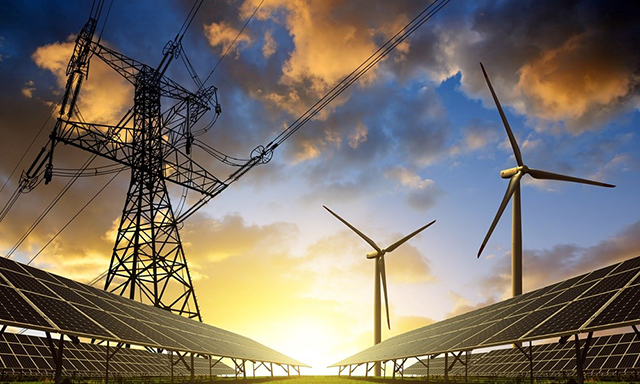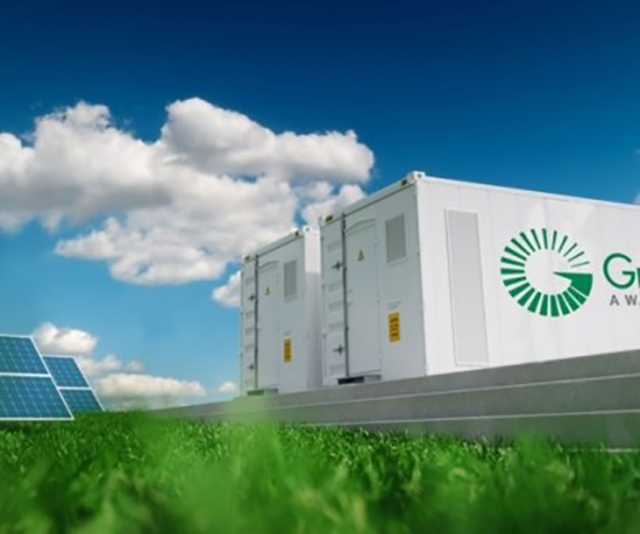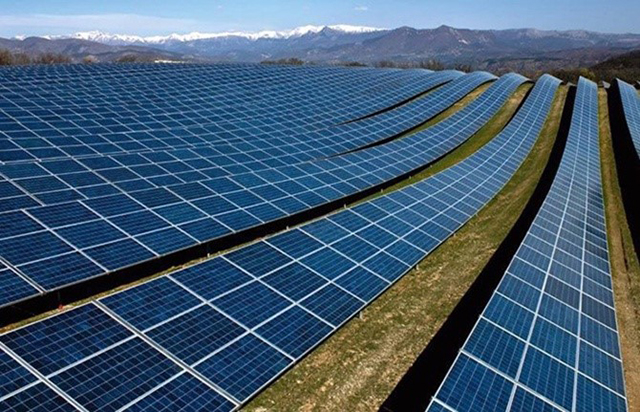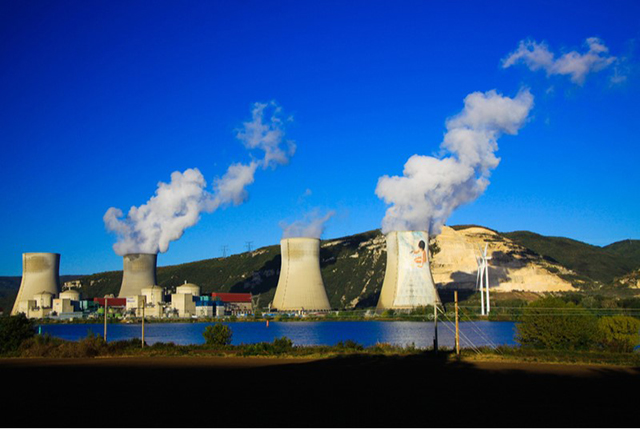
Turkey shut down five thermal power plants completely and one other partially for failure to comply by the law to install filters, authorities said Wednesday.
Four out of seven plants surveyed were allowed to operate temporarily, Environment Minister Murat Kurum told a news conference in Ankara.
"The power plants shut down will not be allowed to go into operation until they complete the environment protocols," he said.
On Dec. 3, Turkish President Recep Tayyip Erdogan vetoed a law that would have delayed the installation of filters on thermal power plants.
Energy and Natural Resources Minister Fatih Donmez said that the average hourly power output of the thermal power plants is 1883 megawatts.
“We have enough reserve capacity to balance it with other plants,” Donmez said.
“Closing these power plants or halting their production for a certain period of time will not pose any problems to our energy supply. With our installed power of over 90,000 MW and diversity of resources, our electricity supply will continue uninterrupted,” he added.
Source: AA

The global energy markets have already started to talk about the glut they are expecting to face over the next five years beginning in 2020. While oil and gas output is forecast to surpass demand, which is estimated to remain stable, larger energy importers, including Turkey, will benefit from falling prices, according to International Energy Agency (IEA) Executive Director Fatih Birol.
In a meeting with journalists on Friday, Birol stated that international energy prices would hover around reasonable levels in 2020, as the world entered an era of what is known as supply glut, a period of excess of supply in relation to demand. "The markets will be particularly drowned in liquefied natural gas (LNG). We are expecting a significant drop in gas prices over the next two years," he said, adding, "Turkey has done very well to seize upon the more economic LNG trend, thanks to a timely project. If it carries out more competitive projects to fortify its energy infrastructure, the Turkish economy will surely enjoy greater benefits," Birol remarked.
According to the data of the Energy Market Regulatory Authority (EMRA), Turkey imported approximately 10.3 billion cubic meters of LNG over the period between January and October this year.
Last year, Turkey's dependence on pipeline gas saw a dramatic decrease to 77.5% down from 88% in 2017. On the other hand, the share of LNG in gas imports rose to 22.5% or a total of 11.3 billion cubic meters. Currently, Turkey operates four LNG terminals – two of them constituting floating storage and regasification units (FSRU) and the remaining two based on land. The LNG terminal in Marmara Ereglisi, located 120 kilometers west of Istanbul in the northern Marmara Sea, operates at a capacity of 5.9 million tons. The terminal is capable of sending out 8 billion cubic meters per year. Another land terminal is located in the industrial Aliaga district of the Aegean province of İzmir with a capacity of 4.4 million tons of LNG. The İzmir terminal operated by Egegaz has a regasification and compression capacity for 6 billion cubic meters per year.
Turkey's first floating storage unit (FSRU) began operating in December 2016 in Aliaga and is capable of supplying 5.3 billion cubic meters gas per year, regasifying more than 12% of Turkey's annual gas demand. The second FSRU operated by BOTAS was commissioned in January 2018 in the Dortyol district of southeastern Hatay province on the Mediterranean coast. It has a storage capacity of 263,000 cubic meters – the largest in the world. The unit has around 20 million cubic meters of daily output capacity.
Turkey is one of the biggest gas markets in the region, with an annual consumption of 50 billion cubic meters – 18th in the world and fourth in Europe, nearly all imported from the world's largest producers. The country's annual energy bill is estimated to stand at around $45 billion.
The head of the IEA head also underscored that renewables would take a higher share in the country's energy basket as the capacity of both solar and wind power continues to increase across the country, leading to falling costs.
The wind power constitutes the world's third most used energy resource, after coal and natural gas. "Currently, the global capacity for wind power stands at around 570 gigawatts (GW). We assume that this figure will double by 2030. The reason for the continued rise in renewables is not mainly driven by concerns over climate change or energy transition, but the trend stems from falling prices as renewable projects have become more and more affordable," Birol explained.
Pointing out that offshore wind power plants would play a significant role in power, given European investment projects due to take effect over the coming years, Birol said Turkey should also utilize its offshore wind power capacity. "The reason why offshore wind projects have been favored in some parts of the world is the high quality of the wind out at sea. But in Turkey, the onshore wind here is already of high quality, while the seafloor is too deep to easily carry out these projects. Turkey should focus on maximizing its onshore wind capacity," he added.
Speaking of Turkey's investment incentive schemes, Birol stressed that the current mechanism, the Renewable Energy Support Scheme (YEKDEM), had played a very positive role in the development of the country's bid to increase the renewable capacity. "I am hoping for a new mechanism that should set a base price and pave the way for investors. The biggest problem for investors is uncertainty. I believe that policymakers will introduce a new mechanism and remove the uncertainty in the market in a very short period of time," he said.
Source: Daily Sabah

The UK reached a clean energy milestone in 2019, generating more of its energy from zero carbon sources than fossil fuels for the first time since the industrial revolution. Figures from National Grid, which is responsible for balancing supply and demand in Britain’s electricity network, showed that almost half of the country’s energy came from non-polluting sources over the year.
Wind, solar, nuclear and hydro energy accounted for 48.5 per cent of the UK’s power generation, while fossil fuels made up 43 per cent. The remaining 8.5 per cent of electricity generated last year came from biomass and waste.
“As we enter a new decade, this truly is a historic moment and an opportunity to reflect on how much has been achieved,” said John Pettigrew, chief executive of National Grid. Last year’s milestone was achieved partly through the rapid growth of renewables, but also because of a sharp decline in the use of coal power, which the UK once heavily relied upon. Over the past decade, the UK has decarbonised its electricity system at the fastest pace of 25 major economies through a combination of factors, including subsidy schemes encouraging renewable energy use and a carbon tax paid by fossil fuel plants.
The country last year became the first big developed economy to adopt a target of net zero carbon emissions by 2050, underscoring growing concern among the British public over the effects of climate change. In 1990, fossil fuels generated 75.5 per cent of the UK’s energy.
At their peak in 2013, coal plants generated enough electricity to power 3m homes every year. In 2019, however, the country notched up its longest period without burning coal — a full 18 days, six hours and 10 minutes.
By next summer only three coal-powered plants will remain after the government promised to stamp out their use by 2025.
Despite this clean energy achievement, analysts warn that significant challenges remain if the UK is to meet its target of achieving net zero carbon emissions by 2050. Mark Carney, outgoing head of the Bank of England, earlier this week said that companies and investors needed to step up planning for climate change and warned that many corporate assets were at risk of becoming worthless.
He added that businesses were not reporting in “any consistent way” on their transition plans. Under Mr. Carney, the Bank of England launched a stress test system to determine which companies and industries would be worst hit by the effects of a warming planet, the results of which will be published in 2021.
Source: Financial Times

What a difference a decade can make. In 2010, batteries powered our phones and computers. By the end of the decade, they are starting to power our cars and houses too.
Over the last ten years, a surge in lithium-ion battery production drove down prices to the point that — for the first time in history — electric vehicles became commercially viable from the standpoint of both cost and performance. The next step, and what will define the next decade, is utility-scale storage.
As the immediacy of the climate crisis becomes ever more apparent, batteries hold the key to transitioning to a renewable-fueled world. Solar and wind are playing a greater role in power generation, but without effective energy storage techniques, natural gas and coal are needed for times when the sun isn’t shining, or the wind isn’t howling. And so large-scale storage is instrumental if society is to shift away from a world dependent on fossil-fuel.
UBS estimates that over the next decade energy storage costs will fall between 66% and 80%, and that the market will grow to as much as $426 billion worldwide. Along the way entire ecosystems will grow and develop to support a new age of battery-powered electricity, and the effects will be felt throughout society.
If electric vehicles grow faster than expected, peak oil demand could be reached sooner than expected, for instance, while more green-generated power will alter the makeup of the electricity grid.
In a recent note to clients, Cowen analysts said that the grid will “see more changes over the next ten years than it has in the prior 100.”
The growing energy storage market offers no shortage of investing opportunities, especially as government subsidies and regulations assist the move towards clean energy. But like other highly competitive markets — such as the semiconductor space in the 1990s — the battery space hasn’t always provided the best return for investors. A number of battery companies have gone bankrupt, underlining the fact that a society-altering product might not reward shareholders.
“Eventually this will come down to some industry leaders who make some money,” JMP Securities’ Joe Osha said. “I think all these companies are going to do a good job of delivering declining prices for [electric vehicle] manufacturers over the course of the next 5-10 years. I am not so sure that they are going to generate great stockholder returns in the process.”
That said, while it might be tricky to invest in pure-play battery companies, there are opportunities to target companies that stand to benefit from the shift to a low-carbon world. For example, Sunrun is the largest residential solar company in the United States, while NextEra Energy is one of the country’s largest renewable power companies and is currently building out its utility-scale storage.
As scientists alter the chemical makeup of batteries and companies make bets on what could be the next breakthrough technology, Dan Goldman, founder at clean tech-focused venture capital firm Clean Energy Ventures, said that areas like innovative battery management systems are a good bet for investors since they can work with any battery technology.
“Capturing the massive economic opportunity underlying the shift to controls and battery-based energy systems” requires that not only planners, policymakers and regulators but investors “take an ecosystem approach to developing these markets,” researchers from Rocky Mountain İnstitute wrote in Breakthrough Batteries: Powering the Era of Clean Electrification.
Battery technology in its simplest form dates back more than two centuries. The word itself is an umbrella term since batteries come in all shapes and sizes: lead-acid, nickel-iron, nickel-cadmium, nickel-metal hydride, etc.
Lithium-ion batteries — which itself can be a catchall term — were first developed in the 1970s, and first commercialized by Sony in 1991 for the company’s handheld video recorder. They’re now found in everything from iPhones to medical devices to planes to the international space station.
Source: CNBC

According to a review by the SUN DAY Campaign of data recently released by both the Federal Energy Regulatory Commission (FERC) and the U.S. Energy Information Administration (EIA) for the first 10 months of 2019, the mix of renewable energy sources is on track to place first in the race for new U.S. electrical generating capacity added in 2019.
FERC’s latest monthly “Energy Infrastructure Update” report (with data through October 31, 2019) reveals that natural gas holds a diminishing lead for 2019 with 49.67% of all new generating capacity compared to 48.45% for the mix of renewables (wind – 28.55%, solar – 18.59%, hydropower – 0.83%, biomass – 0.41%, geothermal – 0.06%). The balance of new capacity added includes nuclear power (0.99%), oil (0.49%), coal (0.39%) and “other” (0.01%).
Notwithstanding a strong start earlier this year, gas’ rapidly shrinking lead seems likely to disappear completely once the full 12-months of data are tabulated. In October, gas added just 1 MW of new capacity while the mix of renewables added 721 MW. New renewables capacity — mostly wind and solar — also exceeded that of gas in July, August and September.
Moreover, EIA recently reported that it “expects that an additional 7.2 GW of [new wind] capacity will come online in December 2019” alone — a one-month expansion roughly equal to the total of new gas capacity (7.8 GW) brought online in the 10 months since the beginning of the year. EIA also foresees another 14.3 GW of wind capacity coming online in 2020.
The forecast growth in new wind capacity during the remainder of 2019 is reinforced by EIA’s latest “Electric Power Monthly” report (with data through October 31, 2019) which shows that wind-generated electricity in the month of October 2019 was 32.80% higher than a year earlier while year-to-date (YTD), wind produced 9.21% more electricity than during the same 10-month period in 2018.
Likewise, solar-generated electricity in October 2019 was 21.65% higher than in October 2018 while YTD, Solar’s electrical output was 14.59% higher than for the same time-frame a year earlier. Small-scale solar photovoltaics alone grew by 19.22% YTD. Compared to all other energy sources, solar-generated electricity has enjoyed the fastest growth rate thus far in 2019 — that for natural gas, for example, was just 6.71%. Nuclear power grew by a mere 0.08% while coal-generated electricity plunged by 14.46%.
For the first 10 months of 2019, the mix of renewables accounted for 18.18% of the nation’s electrical generation, compared to 17.57% during the same time period a year earlier. Renewable energy sources were also 21.95% of total available installed generating capacity — up from 20.76% a year earlier.
Solar capacity alone is now 3.37% of the nation’s total compared to 2.93% a year ago while that of wind has expanded from 7.72% to 8.50%. In addition, wind now enjoys a clear lead over hydropower in both its share of capacity (8.50% vs. 8.43%) and actual generation (247.182 million MWh vs. 230.815 million MWh).
“If I were to predict the final numbers for the year based on the data and trends to date,” noted Ken Bossong, Executive Director of the SUN DAY Campaign, “I think it is highly probable that renewables, dominated by wind and solar, will comfortably take the lead for new capacity added in 2019 and then continue to expand their lead in 2020 and beyond.”
Source: Solar Power World

Installed non-hydro renewable capacity in France is expected to reach 25.3 GW by 2030 (from 8 GW in 2018) at a compound annual growth rate (CAGR) of 11.03%, according to a report by GlobalData.
The report, entitled “France Power Market Outlook to 2030, Update 2019 – Market Trends, Regulations, and Competitive Landscape” reveals that non-hydro renewable power is expected to show the highest growth rate in 2019-2030, registering a compound annual growth rate (CAGR) of 21.9%, wind being the highest contributor in the renewable energy mix followed by small hydro, biopower, solar PV and others.
In 2000, nuclear power was used as the primary source with a share of 54% in the power mix followed by the thermal and hydro. However, the trend changed and the share of thermal and hydropower came down to 13.9% and 19.06% respectively whereas renewables increased to 19.9% in 2018. The country is emphasising on the more use of renewables to 19.9%.
The country is aiming to boost the renewable energy sources at a CAGR of 8.9% during 2019-2030 with net capacity addition of around 50 GW. Installed capacity for onshore wind will double from its current levels of 15.1 GW by 2026, and to support the expansion the government has announced doubling of the renewable energy budget. Solar PV is not behind by much in terms of growth and will witness an addition of more than 24 GW during 2019-2030. In the long-term, the government has decided to cut down its fossil fuel dependency and is replacing coal and oil-fired plants with gas-based plants. The government has also announced to bring down the nuclear power generation to 50% of the net generation by 2035. The plan is to decommission around 14 nuclear reactors by 2035 and fill the gap by renewable energy sources.
France under the Multiannual Energy Program aims to reduce fossil fuel consumption by 40% by 2030 from its 2012 levels and ensure a clear, fair, and sustainable energy transition for all. The plan includes phasing out of coal by 2022, decommission nuclear reactors, and boost renewable energy development with the main focus on wind and solar. In the case of wind, France paved the way for floating wind turbines with four demonstration projects approved by the European Commission.
The development of renewable energy is largely supported by public support mechanisms until recently. These mechanisms finance the difference between the remuneration of their production on the wholesale market and the purchasing price guaranteed by the State to the renewable producer. Production costs are expected to fall further as witnessed by the continuous fall in average prices for solar in recent tenders, the development of solar and wind generation will facilitate energy generation at a lower cost.
Source: Power Technology
The Future of Energy is Being Shaped in Asia
Decarbonization is changing the face of energy and the world economy in more ways than most consumers — and even most executives — appreciate. Besides the transition from molecule to electron, as this move toward electrification suggests, it is also shifting the industry’s economic base from West to East and reconfiguring the hierarchy of companies and geographies that define energy.
Please click here to read the full report.
Solar Istanbul 2020
March 11 - 13 / Istanbul
3rd International Forum Energy for Smart Mobility
March 31 - April 01 / Marseille
InnoGrid2020+ Conference
May 05 - 06 / Brussels
23rd World Hydrogen Energy Conference
July 05 - 09 / Istanbul
4th International Conference on Energy Research and Technology
August 19 - 21 / Praque

